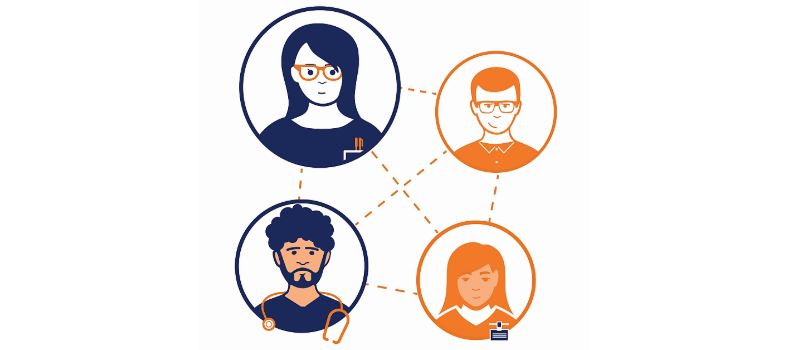Case Study 2: Ameena
Introduction
Ameena is a 43-year-old woman, originally from Iran. She sought asylum in Britain 7 years ago when her husband was executed for speaking out against the government. Ameena lives with her partner Janet in a one-bedroom social housing flat in Liverpool. She has no family in the UK and is unable to visit her family due to the danger to her if she were to return to Iran.
In Iran Ameena was a drama teacher, she is still passionate about the arts and enjoys going to plays when she is able. Since receiving asylum 2 years ago Ameena has been working as an assistant at a children’s nursery. Ameena and Janet have limited social support, but are close with their neighbour James.
Ameena was diagnosed with MND six months ago. Her presenting symptoms were breathlessness, disturbed sleep and morning headaches. She has found these symptoms and their sudden onset distressing. She is happy to attend her neurology appointments and accepts that she will continue to experience rapid change with her condition. Janet is very concerned with how quickly Ameena’s breathing has been affected.
Case Presentation
Ameena went to her GP because of recurrent headaches in the morning and difficulty catching her breath. There was a delay in her being referred to a specialist at first and her GP suggested over the counter painkillers. Ameena returned to her GP 4 weeks later when she had become visibly more short of breath. Initially the GP was concerned that she may have sleep apnoea and this was investigated at first.
Ameena was referred to the respiratory team and a neurologist. The neurologist suspected MND but a referral was made to a specialist neurologist for confirmation. A definite diagnosis of MND with respiratory type symptoms was then made following a full neurological examination.
Over the past six months Ameena has:
- Experienced disturbed and reduced amount of sleep
- Increasing breathlessness
- Decreased exercise tolerance, she previously enjoyed running, but now struggles to climb the stairs.
- Periods of confusion and loss of concentration
- Increasing fatigue
- Lost a significant amount of weight
- Has reduced coordination and motor control
- Relies on a walking frame to walk around the flat, and a wheelchair when outdoors
- She has recently developed a chest infection for which she is on her second course of antibiotics
Ameena and Janet report noticing that Ameena’s condition is changing on a weekly basis. Ameena is now relying more heavily on a wheelchair and requires non-invasive ventilation throughout the day and night.
Management and Outcome
Ameena’s condition is rapidly deteriorating and she requires regular specialist input to manage these changes. Ameena has been referred to the local hospice, she is also seen by the respiratory team, a neurologist, dietician and speech & language therapist (SLT).
Ameena is accepting of her condition and continue with the non-invasive ventilation, but has declined further intervention such as a feeding tube. Ameena and Janet reached a crisis point when Ameena’s condition changed rapidly over a period of two weeks and she was no longer manage her personal care.
- what do you believe are the 2/3 main issues?
- what needs to happen next?
- who to involve?
- how you would organise those next steps?
- what is the key information you would pass on to other MDT members and how?
Compare your answers to those of 2 other MDTs by watching these videos:
Oxford Group Case Two: https://youtu.be/4Kr_5qVN9_0
Physio Case Study Two: https://youtu.be/U4jC8-LkRc0
